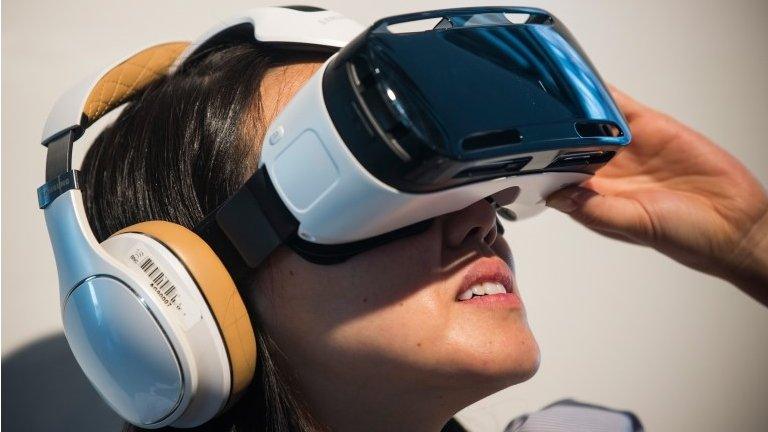MWC 2015: Are tablets falling out of favour?
- Published

Initial sales of tablets were brisk, but recent demand for the computers has not met expectations
Not long ago, we were assured the iPad and its ilk were destined to dominate our everyday lives.
"Tablets will rule the future," one analyst said three years ago, external, forecasting sales would swell to 375 million in 2016.
Nobody is that bullish anymore.
The tablet sector recently suffered its first drop, according to tech consultancy Canalys - down 12% over the final three months of 2014 compared with the same period the previous year.
Apple - the market leader - sold 15% fewer iPads over 2014 as a whole compared with 2013.
Barcelona's Mobile World Congress (MWC) will attempt to reinvigorate interest next week - a Sony leak indicates, external its will unveil a model with "industry-leading battery performance".
But research house Gartner is now saying the sector's growth, external will be limited to 259 million sales next year, meaning PCs will continue to be more popular.
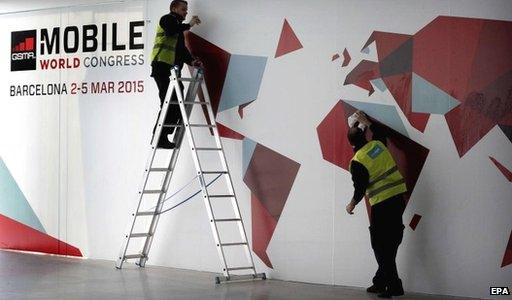
Samsung, Sony, HTC, Huawei, LG and Microsoft will all unveil new devices at MWC

Tablet stats:

Worldwide tablet sales :
2010: 17.6 million
2011: 59.8 million
2012: 124.8 million
2013: 216.3 million
2014: 216.1 million
2015: 233.4 million (forecast)
2016: 259.0 million (forecast)
(source: Gartner)
Apple's iPads are the bestselling brand. Between 3 April 2010, when the original went on sale, and 27 December 2014, the end of the Apple's last financial quarter, the US company sold:
258 million iPads
more than 615 million iPhones
(source: Apple)
Cheap "brand X" tablets - such as Tesco's Hudl - have proved popular. Combine the various companies together, and they outsell their better known competitors. In 2014, their respective market shares were:
generic tablets - 29%
Apple - 26%
Samsung - 17%
(source: Strategy Analytics)
Despite being outsold by phones, tablets punch above their weight when it comes to internet shopping. A study of purchases made in the UK indicates that over 2014 the two classes of categories generated:
tablets - £9.32bn sales
smartphones - £4.67bn sales
(source: eMarketer - data excludes travel and event tickets)

Tablets v phablets
One suggestion is that the experts got carried away with the early rush to the tills.
"The initial growth that got people excited was inflated by the fact that early-adopters adopted faster than usual," Carolina Milanesi, chief of research at KWP Comtech tells the BBC.
"In other words, the initial sales curve was steeper than that for smartphones, and this led to the idea that tablets would do much better than they have.
"What happened, though, was that it became apparent that the value proposition to your average Joe on the street wasn't clear. People asked, 'Why do I need to get this when my phone already does a lot of the same things?'"
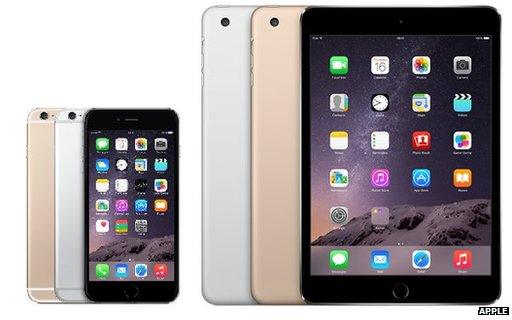
The iPhone 6 Plus is two-thirds of the height of the iPad Mini 3 and has a higher resolution screen. Many analysts think it has hit demand for Apple's tablet
For those that did buy, and love running apps on a larger screen, there may also be little pressure to upgrade.
"We're getting bigger and bigger phones - the iPhone 6 Plus is big, the latest Samsung handsets are big - so there's less differentiation between the two categories," says Michael O'Hara, from the GSM Association, which hosts MWC.
"And operators offer less subsidies for tablets [because most are bought without a Sim card], so that's also probably a factor in the refresh cycle."
By spreading the cost of a new handset across the lifetime of a contract, operators not only make it seem relatively cheap to switch to a new smartphone, they also protect the profit margins of top-end mobiles.
By contrast, Android-device manufacturers, in particular, have felt the need to make the prices of their tablets more keen.
This becomes apparent if you try to buy the devices from them off-contract.
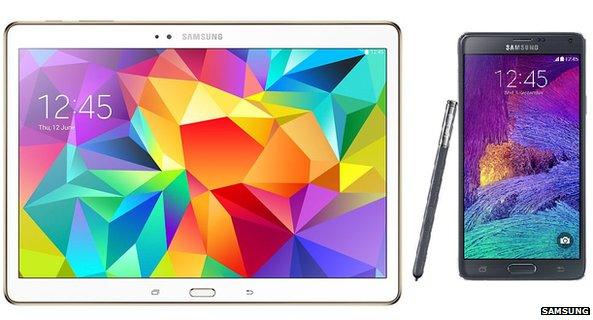
The Galaxy Tab S 10.5 is bigger than the Galaxy Note 4 but sells for two thirds of its price
For example:
LG sells its top-end G Pad tablet for £190 and its G3 phone for £380
Samsung sells its Galaxy Tab S 10.5 wi-fi tablet for £400 and its Galaxy Note 4 phone for £600
Sony sells the wi-fi version of its Xperia Z3 tablet for £350 and its Xperia Z3 phone for £550
All of which gives the device makers an added incentive to focus their marketing spend on their phones rather than their tablets.
Read and watch
Furthermore, many of the things that drive consumers to buy new phones - better cameras, built-in footstep trackers, fingerprint sensors, touch-and-pay facilities and extended battery life - don't have the same appeal if offered on tablets, since the bigger devices are less likely to be used outdoors.

Many tablet owners spend most of their time on tablets watching videos, visiting websites, playing games and checking social-media accounts rather than creating complex documents
And despite the efforts of Microsoft, Apple and Google to convince us that their latest models can be used to make complex spreadsheets, videos, music and more, many want to use them to consume media rather than create it.
"If you just want to read stuff and watch Netflix on your tablet at home, some of the early tablets are just as good as the latest devices," says Stuart Miles, founder of the gadget review site Pocket-lint.
"If you are intrigued by a tablet, you've probably already bought one, so there really needs to be a paradigm shift, a change in what it offers you, to convince you to upgrade."
That's not to say innovation is limited to making tablets thinner.
Lenovo recently unveiled the Yoga Tablet 2 Pro, which features a built-in projector and subwoofer.
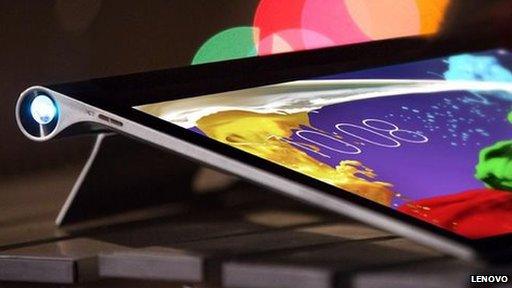
Lenovo's Yoga Tablet 2 Pro can project video and images on a wall
The pitch is that this could be useful for presentations and letting groups watch movies together, although reviewers suggest the low resolution and brightness of the projector limits its appeal.
Perhaps more intriguing is the fact that the Yoga's screen is 13.3in (33.8cm) - much bigger than the norm.
Microsoft has also gone large with its 12in (30.5cm) Windows-powered Surface Pro 3, Samsung has introduced a 12.2in (31cm) tablet and there are rumours Apple, external is working on a similarly proportioned iPad.
Bigger, better?
When it comes to tablets, Ms Milanesi thinks size will count if consumers, schools and businesses are to consider them PC-replacements.
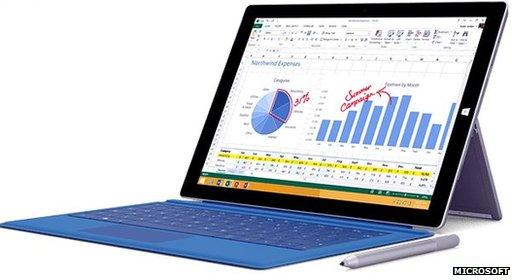
Microsoft markets its 12in Surface Pro 3 as "the tablet that can replace your laptop"
"If you are working with productivity apps, like Office, having a bigger screen helps," she says.
"Plus, if you don't want to use an external keyboard, having a larger screen gives you more real estate so less of it is covered when you type.
"It also helps with multitasking - having your Twitter feed or email on one side and being able to write a document on the other side, or students having a text book on one side and writing on the other - it's just more flexible."
However, she notes, the shift also makes tablets considerably less comfortable to carry around.
Tim Coulling, an analyst at Canalys, suggests IBM's tie-up with Apple to create business-focused apps also points the way towards tablets being used more commonly in the workplace.
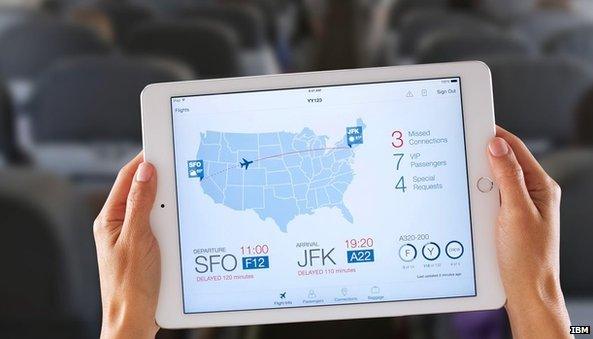
IBM may show off some of its forthcoming business-centric apps at MWC
"There are a lot of job functions where tablets make perfect sense - for service workers out in the field, for example, or point-of-sale devices in shops," he says.
The release of Windows 10 later this year may also drive demand. But, Mr Coulling adds, the days of rapid growth may be over.
"The tablet market isn't going to crash, but we're reaching a plateau now that it's become saturated," he says.
- Published3 December 2014

- Published10 October 2014
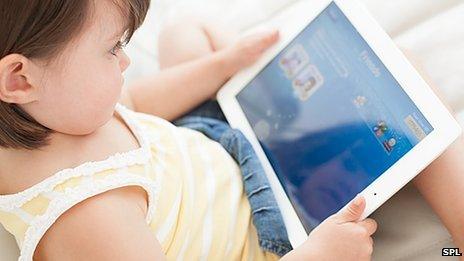
- Published16 October 2014
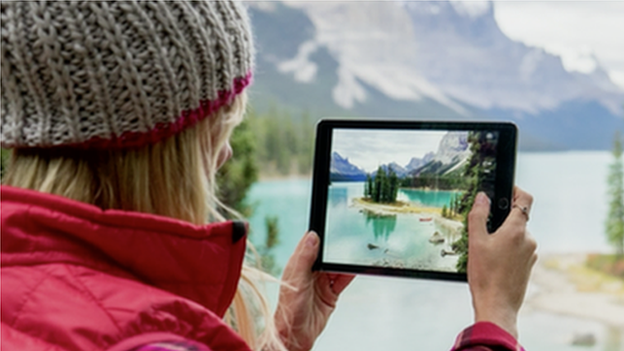
- Published3 September 2014
